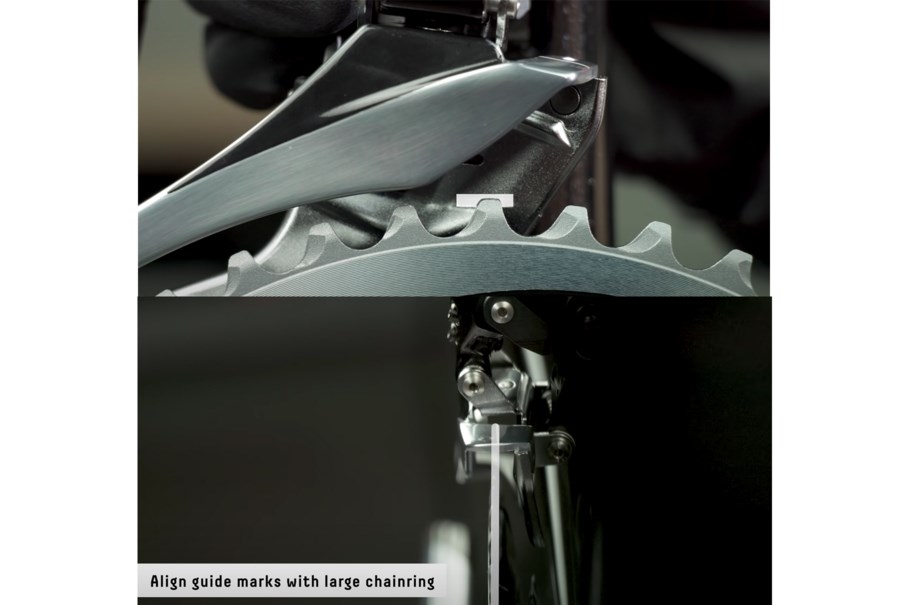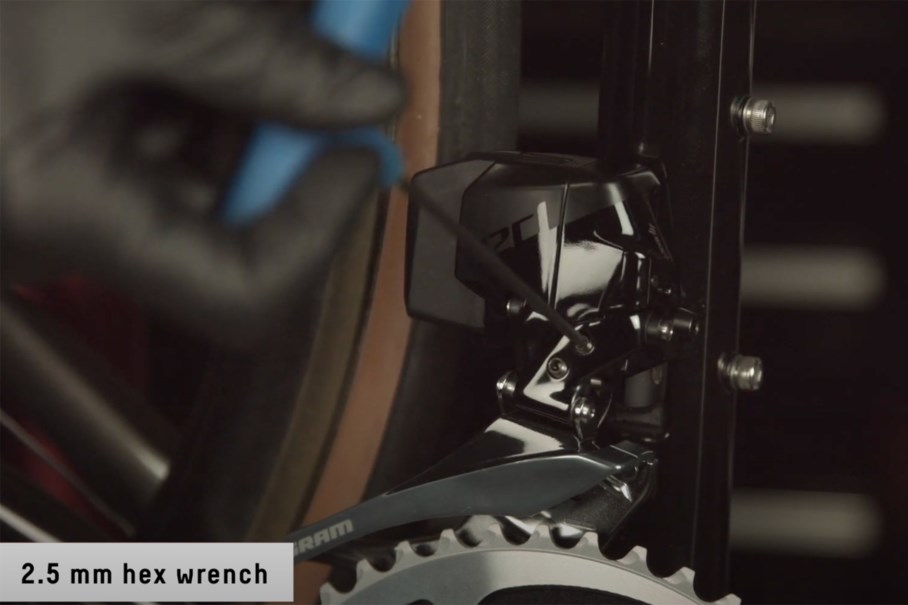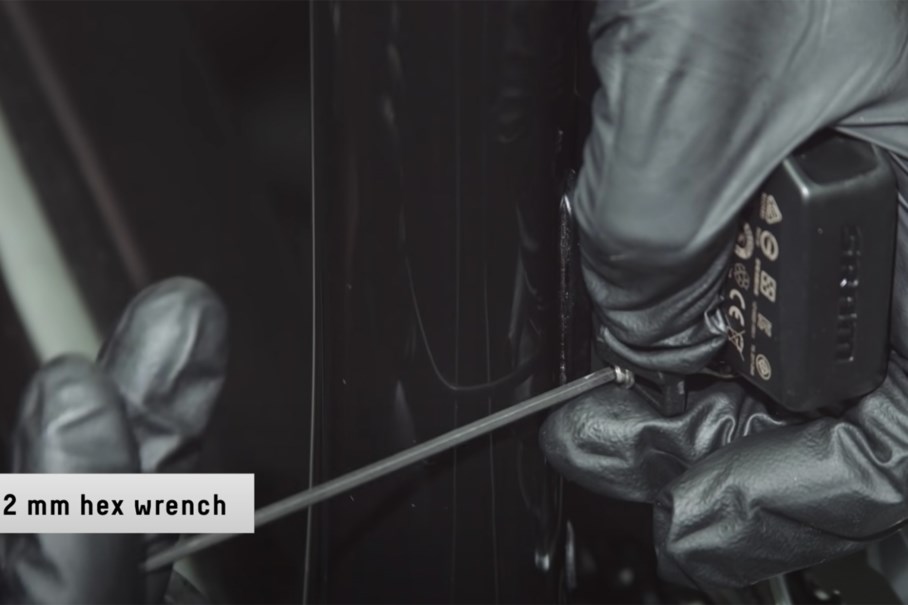TROUBLESHOOTING ETAP AXS CHAIN DROP
Front Derailleur Alignment Tips for Ideal Performance
CHECK MOUNTING POSITION

The front derailleur’s position on the bike is absolutely foundational to its performance. This setup step has more effect on shifting performance than any other adjustment.
First, make sure the mounting height is correct. With the derailleur shifted into the small chainring, adjust the derailleur at the braze-on mounting bolt so that the outer cage plate is 1-2mm above the tallest tooth on the large chainring. You can also use the guide mark etched into the inner cage plate to set the height in the big ring. Just ensure that the tops of the big chainring teeth are passing through the guide mark.

Second, check rotational alignment by shifting into the large chainring and adjust the derailleur at the braze-on mounting bolt so that the alignment marks on the front and back of the cage align with the large chainring.
Both of these adjustments can affect one another, so keep an eye on both as you make them. When you’re satisfied with the position of the front derailleur, slowly bring the mounting bolt up to 6 Nm torque.
If you continue to struggle achieving proper alignment, we’ve recently developed a tool that can aid in front derailleur setup. Your local shop may already have one and can set up your front derailleur in a few short steps.
CHECK LIMIT ADJUSTMENTS
When shifted into the big ring up front and smallest cog in back, adjust the high limit screw (the one on top) until there is 0.5-1 mm of clearance between the inside of the outer derailleur plate and the chain.
When shifted into the small ring up front and largest cog in back, adjust the low limit screw (the one on bottom) until there is 0.5-1 mm of clearance between the inside of the inner derailleur plate and the chain.

CHECK THE WEDGE
Look at the back side of the front derailleur to see if the support wedge is installed and adjusted properly. Without it, outer limit adjustment needs to compensate to produce a fast shift, but then you run the risk of an over up-shift chain drop.
If the wedge is missing on a bike that came with an eTap AXS front derailleur, see your local dealer to ask for a free replacement. If you bought the derailleur to install on a bike, a selection of wedges was included in the original packaging. This is an important part of the front derailleur setup process because it provides a significant increase in stability when upshifting to the big ring.

Make sure the wedge lightly contacts the frame or braze-on. If it does not, loosen the 2 mm mounting bolt, slide the wedge forward until is snug against the derailleur, and then tighten the wedge bolt to 0.3 Nm.
Not everybody feels comfortable working on their own bike, so don’t hesitate to enlist your local bike shop to get your setup dialed.